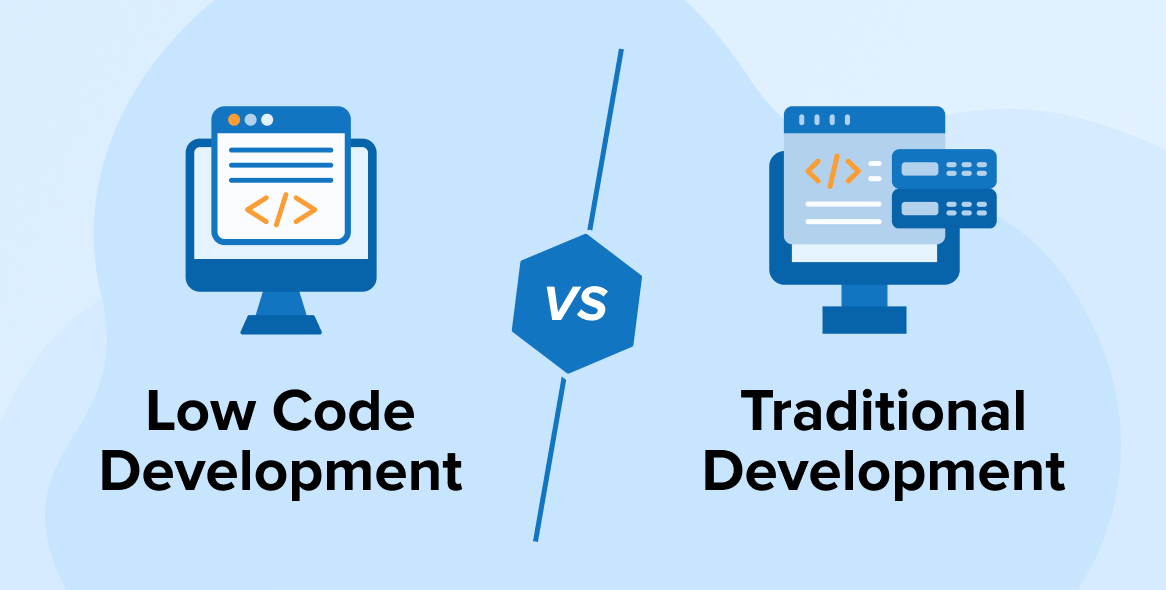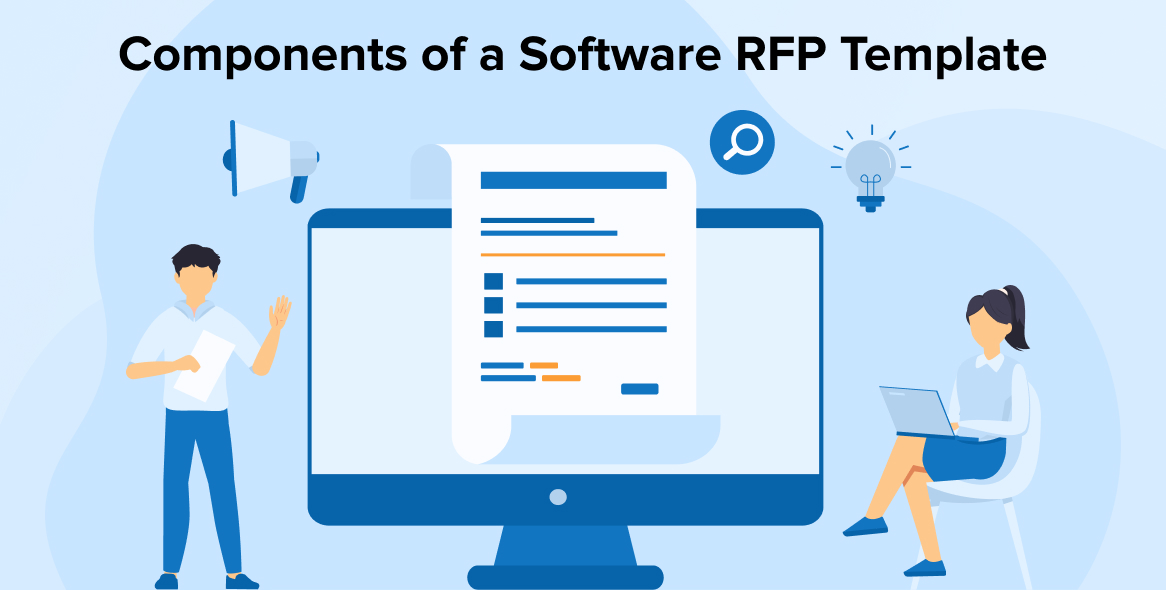
Want to develop and deploy quality software?
Of course, thorough testing may help you with software quality assurance but it is a post-development process. Making changes post-development can be very difficult for software developers as they have to recall the logic and approach behind writing code.
However, what if there is something you can do during the development stage to ensure that there aren’t any insufficiencies in your code that might make it messy and pile up technical debt in the future?
Reputed custom software development companies are known to deliver high-performing and quality software products because they review code in integrated development environments. If you too want to create an optimum quality code base, then it becomes necessary to understand and implement code review practices.
1. What is Code Review?
The process of examining the code quality is called a code review, also referred to as a peer code review. Developers who weren’t involved in writing the program are tasked with reviewing it to match quality standards.
They are responsible for static analysis, finding potential issues and bugs, and offering suggestions to continuously improve the code quality. Code reviews can be done for a newly authored code, or modifications made in an existing one.
However, the process can be informal, where the developer is analyzing the colleague’s work, or in a formal process, it can be conducted with documented quality checks and feedback to ensure that the code is up to the industry coding standards.
When implemented in a structured manner, the peer code review process can be very effective.
1.1 Why is a Code Review Process Important?
Code review is an integral aspect of a development project in software engineering.
In software development, code review helps to fix complex problems, errors, and bugs and improves code readability, maintainability, and security. Reviewing code also enables knowledge sharing at the initial stages of software development. It helps save time and a significant amount of money in the long term. A reviewed code is easy to read and understand for future developers to work with. Moreover, code reviews help foster collaboration and shared code ownership among team members.
1.2 Benefits of Code Review
Following are some of the advantages of Code Review:
1. Ensures Consistency in Design and Implementation
Often when the project is large, various developers are writing different sections of code simultaneously. And their coding style will vary. When such code sections with different coding styles are combined, the app code becomes inconsistent.
Code reviews help enforce the best programming practices in the development cycle. This helps standardize the code base. So that any developer can read and understand it easily. Even in the case of personnel change, the code review process comes in handy.
Moreover, with a reviewed code, future developers won’t have to waste their time analyzing the intricacies of the code and can spend more time building features.
2. Optimizing Code for Better Performance
Junior developers with less experience, and knowledge about coding standards can benefit largely from a code review process that can help them write clean code and identify the areas where they need to improve.
Code reviews from seniors can provide new developers with constructive feedback and the right guidance that can help them hone their coding skills. It also helps them identify their mistakes that may eventually lead to serious errors or bugs.
Programming is a task with a monotonous nature. Even expert developers who have busied themselves in coding complicated functionality often overlook mistakes. Because they trust that code reviewers will check the code and help them rectify those mistakes before the code is deployed.
3. Improve Collaboration
Reviewing code is a practice that encourages developers to communicate and exchange ideas with their team members. It builds trust in the team members. Such discussions lead to brainstorming that broadens everyone’s understanding and provides innovative or alternative approaches and optimizations.
Peer code reviews help foster an environment that encourages learning and knowledge sharing of ideas. A developer must be aware of various ways they can use to create solutions. Code reviews also help them gain an understanding of different sections of the code base.
4. Enhance Security
When your code is kept under scrutiny, it enhances its security especially if you have security professionals on the review team. In any project, software security is the priority. Code reviewers can ensure compliance by detecting security vulnerabilities and fixing them.
3. Discover Bugs Earlier
Instead of being reparative and scrambling to fix bugs post-deployment, it’s better to be preventive and conduct code reviews to find errors and fix them before launch.
Developers can fix the code with a fresh perspective when they move code reviews ahead in the development project with unit tests. While waiting till the end of the project for a review, a developer might forget the code, the logic behind it, and potential solutions to fix errors.
1.3 Disadvantages of Code Reviews
Following are the disadvantages of code review:
- Time and resource constraints: Code reviews take time. Conducting quality checks and providing feedback to peers is a time-consuming process. It can further become more challenging if the time and resources for it are limited.
- Pull focus from other tasks: Developers have a lot on their plate, some of which are very high-priority tasks that need to be executed in a timely manner. They just can’t dedicate a chunk of their time to reviewing code. They might face a dilemma between finding their task or halting everything to conduct a code review. In either case, some organizational work is obviously delayed.
2. Top Code Review Approaches
Now it’s time to explore the code review approaches.
2.1 Pair Programming
In this process, two developers sit together at a single workstation. One developer will be writing code whereas the other will provide real-time input, feedback, and suggestions to improve quality.
Pair programming is largely adopted while training new developers. However, because it consumes too much time, this peer review approach is rather deemed inefficient. Additionally, the code reviewer is kept from doing any other productive work.
2.2 Over-the-Shoulder
Over-the-shoulder reviews are faster in comparison to the pair programming approach. It is undoubtedly one of the most intuitive, easiest, and oldest ways to review a peer’s code.
In this approach, when the developer’s code is ready, the colleague is invited to their workstation to review it. Along the way, the developer explains the logic behind their programming.
This approach is very informal. So, there isn’t any documentation to track the review, quality checks, feedback, or changes. So, it is rendered ineffective in the long term.
2.3 Email Pass-Around
Although over-the-shoulder is an effective way to review the new code, it becomes irrelevant when the software development team is distributed geographically. That’s when the Email Pass-Around approach can come in handy.
Here, the developer will email the diff file of changes to the entire team. This sparks the conversation and brainstorming. The team members might ask for clarification behind code logic, point out the errors, and suggest some more changes.
Organizations have leveraged the versatility of emails and maintained a public mailing list which also serves as a forum where software developers can share and review source code.
The advent of code review tools hasn’t made these mailing lists irrelevant. They are still used primarily for announcements and discussions.
2.4 Tool-Assisted Reviews
One of the easiest approaches to code review is tool-assisted reviews. A software-based code review tool will be far more effective and won’t have any limitations of manual review approaches either.
Review tools are used to track comments and suggested solutions from the peers in a clear sequence allowing for non-local and asynchronous reviews.
When a peer adds a review, the programmer is notified of it. Some code review tools generate usage statistics to audit the software development process and review metrics. It helps with compliance reporting and process improvements.
3. Best Practices for Code Reviews
Let’s see some common best practices for Code reviews.
3.1 Create a Code Review Checklist
A structured code review process is more effective. So, developers have to prepare a set of rules and questions that they would follow during the review. This list is called a code review checklist. It helps you ensure that all necessary quality checks are performed before approving your codebase for deployment. For example, some aspects covered in your checklist are:
- Readability
- Security
- Test coverage
- Architecture
- Reusability
3.2 Introduce Code Review Metric
You have to measure the quality of the code to determine whether it is deployable or not. And to validate its quality. You need to test or check the code using certain metrics. These metrics will be objective and help you predict the timeline of the project, analyze the impact level of the code changes, and the effectiveness of the review. Some of the metrics you can use are:
- Inspection rate: When you divide the total number of lines of code you are reviewing by the total review time, what you get is the inspection rate of the coding review team. If the review time is longer then you have code readability issues.
- Defect rate: This tells you how often defects are identified in your code. You can calculate the defect rate by dividing the number of defects detected in your code by the time spent reviewing the code. This helps you verify whether your testing process is effective or not. Let’s say if the defect rate of a developer is low then they need to use more powerful software testing tools.
- Defect density: The number of defects detected in a given section of code is called defect density. You can calculate it by dividing the number of defects by the thousands of lines of code (kLoC). This helps you identify which one of your app components is more prone to failure. So you can take appropriate measures.
3.3 Ensure Your Feedback Justifies Your Stance
The code reviewer doesn’t simply have to make changes or fix the code but also has to explain to the developer why the changes are needed so the same mistakes aren’t repeated in the future.
There may be more than one way to develop certain solutions and functionalities. The reviewer comments on the code based on their knowledge and experience. The programmer may have adopted a different approach. Therefore, it becomes necessary to explain the reasoning behind your suggestions.
For example, you are reviewing a piece of code where the author has used multi-threading but you don’t think it’s required. Now, you should explain to them how in this scenario, using a concurrency model isn’t beneficial and why their code should be single-threaded.
There are many advantages to explaining. The programmer will get to know more effective ways to solve a similar problem in the future. And because you offer explanations for your suggestions, the programmers don’t have to follow up on the comments and their reasoning. It saves both of your time.
3.4 Use Automated Tools for Effective Code Reviews
When it comes to doing effective code reviews, automated tools can be very useful. They can help you comply with security measures, identify violations of coding standards, code analysis, defect density metrics, test coverage code quality, and more.
A variety of automated tools like Code Climate, SonarQube, Codacy, and more are easily integrated with the code repository and offer feedback for every pull request.
3.5 Ensure Pull Requests are Small and with a Singular Purpose
A standard process of requesting for peer code reviews is called Pull Requests. The PR triggers the review process as soon as the initial code changes are completed. To enhance the speed and efficiency of manual code reviews, the PRs are generated with specific instructions.
The review will take more time if your PR is long. In that case, the reviewer might miss the primary objective behind the pull request. Therefore, it is recommended that the PR should be approximately 250 lines which is helpful for code reviewers to find defects in an hour.
4. Top Code Review Tools for Developers
You can enhance the efficiency of your code review process by using certain tools. Code review tools also help you automate the entire review process. You should pick a code review tool that is compatible with your tech stack and can be easily integrated with your workflow. Here are some of the top code review tools to choose from:
4.1 Github

GitHub comes with an in-built code review editor. It’s a developers’ favorite and the birthplace of pull requests. Each pull request here is embedded with lightweight code review tools which enables the developers to effortlessly integrate the reviews into their workflow. If the developers are managing their source code in GitHub then it becomes their code review solution by default.
Key Features:
- GitHub allows static code analysis, code inspections, synchronization, recording, and rewinding of changes made in your source code.
- GitHub is the platform where you can find the best community-approved projects to work on. This helps get things done faster and then share them with the world through GitHub packages and npm.
- Pull requests from GitHub help you write better code by allowing you to create new features, fix bugs, and experiment with the code.
Cost: The basic package starts from $4/month.
4.2 Crucible

Atlassian offers a commercial suite of tools called Crucible which helps you with reviewing the code, discussing the changes with your team, and identifying and fixing bugs in the control system’s host version.
Crucible supports various version control systems such as Perforce, CVS, Mercurial, Git, and SVN. When conducting a code review, you can comment on a specific section of a code as well as inline within the different views. That helps you specify what exactly you are referring to in the code.
Being an Atlassian product, Crucible is compatible with the company’s other enterprise products such as Enterprise BitBucket and Confluence. But utilizing it along with Project Tracker, Issue, and Jira, can help you get maximum outcomes. In Crucible, you can also perform pre-commit audits and reviews on the merged code.
Cost:
- The small team with a maximum of five users can use unlimited repositories with a plan of one-time payment of $10 per user.
- The plan for large teams includes ten users and charges $1100 for unlimited repositories.
You can take a trial run of both of these plans for 30 days without giving your credit card details.
4.3 CodeScene

Analyzing how the organization works with the code helps CodeScene determine the technical debt. You can think of this tool as an additional team member of your delivery pipeline that can provide context-aware quality gates and predict the delivery risks. It is easily integrated with Jenkins, GitLab, BitBucket, and GitHub.
Key Features:
- The team can collaborate on the code review using the team retrospective support from CodeScene.
- Quality gates and automatic pull request reviews are available for GitLab, Azure DevOps, BitBucket, and GitHub.
- CodeScene helps you prioritize the code section that offers the most value.
Cost: Packages start at $23/user.
4.4 BitBucket

BitBucket is a source control management platform just like GitLab and GitHub. And because of its permissions flexibility similar to GitLab, BitBucket is also considered an intuitive fit for medium to large-size organizations.
While using this code review tool, it becomes easy for development teams and other technical personnel to loop in the UX and product because of its capability to add screenshots. BitBucket can provide specific reviews for any given pull request based on criteria such as previous commit contributions or current workload with the help of a tool called reviewer suggester.
However, expediency is the biggest drawback of this tool. There are a variety of Atlassian products available in the market so organizations have ample options to choose over BitBucket to track and manage their products and projects.
Cost: 3 USD per user.
4.5 Rhodecode

Rhodecode supports multiple version control systems like Subversion, Mercurial, and Git. It offers conversational and iterative peer reviews for effective team collaboration. Visual changelog allows you to view the project history across various branches. And the permission management function of this review tool ensures that your development is secure.
Cost: RhodeCode review tool is available at different costs as mentioned below:
- Community version – open source and free
- Enterprise version (cloud-based) – $8/ user per month
- Enterprise version (on-premises) – $75/user per year
4.6 Review Board

Review Board is an open-source and web-based tool that you can easily download from their official website, set up on your server, and try out its demo.
As a prerequisite for running the software on your server, you will need a web server, PostgreSQL, or MySQL for database, python, and its installers. A large array of version control systems such as Perforce, Subversion, CVS, Mercurial, and Git can be integrated with the tool.
You can store the screenshots directly in your software by linking the Review Board tool with Amazon S3. Depending on your needs, it allows you to run both pre-commit as well as post-commit code reviews. In case your tool isn’t integrated with any version control system, using a different file, you can easily upload the code changes for review.
It graphically displays the changes made to your code. Moreover, it allows you to perform document reviews as well. Although it is a simple tool, also supported by a large and active community. So, you can easily seek support if you come across any issues.
Cost: OpenSource
4.7 Collaborator

The Collaborator tool from Smartbear was designed to tackle the issue of quality in a growing software. Its personalized review templates help create unique workflows. In-depth audit reports and real-time individual comments help eliminate the need to retrace the steps or hunt team members for answers.
Handling the GitHub pull requests and meeting the compliance measures have become easy with the implementation of methods from the Collaborator. Its default features help coders pay attention to detail while improving productivity.
Cost: 759 USD for 5 Users per year.
5. Conclusion
In this blog post, we discussed the concept of code review in detail. We have also browsed through its importance, pros and cons, approaches, best code review practices, and top tools to use for it.
The constant refining and optimizing of the code may not prove to be as effective as the implementation of a code review process. Such a process is a combination of manual peer review, automated code review, and secure code review practices to ensure that the code is of high quality, secure, and efficient.
FAQs
What is the Code Review Technique?
The code review technique is a process where code is re-read and analyzed to detect and fix problems lying in it. Code Reviews are either performed manually by peers or by automated tools.
What are the Three Types of Code Review?
The three types of code reviews are over-the-shoulder reviews, email pass-around, and tool-assisted reviews.
Is Code Review a QA?
Code review is an integral aspect of the QA process in a software development lifecycle. Internal QA, detailed code reviews, and automated testing are included in the QA code review checklist. It helps find errors and saves time and effort. However, in many instances, code reviews are conducted in the development stages as well.






Comments
Leave a message...